The color blue spans a remarkable spectrum of emotions and experiences—from serene tranquility to profound melancholy and vast openness to intimate comfort. Beyond its visual presence, certain places in the world seem to embody the essence of blue, creating environments where the color becomes an almost tangible experience that engages all the senses.
Here is a list of 20 destinations where blue transcends being merely a color to become an immersive experience. These environments envelop visitors in blueness, and everything—light, sound, temperature, and even time—seems infused with it
The Blue Grotto, Capri, Italy
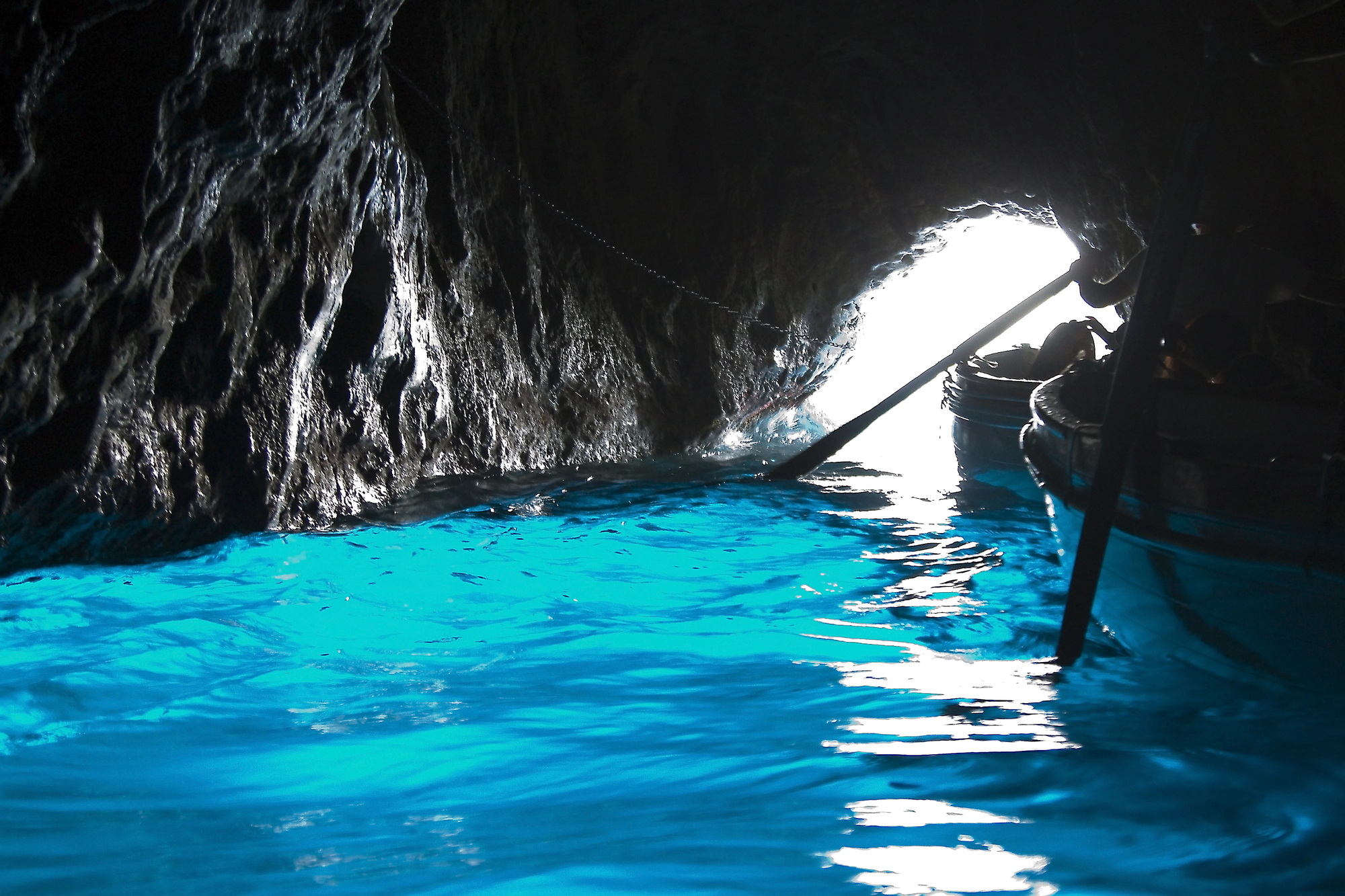
The legendary sea cave on Italy’s Capri island creates perhaps the world’s most intense blue environment as sunlight filtered through underwater apertures illuminates the chamber with an otherworldly azure glow. The specific angle of light rays and the mineral composition of the water combine to absorb all other colors of the spectrum, leaving only the purest blue radiating throughout the space.
Visitors must enter lying flat in small rowboats through a narrow opening, creating a dramatic transition from ordinary sunlight to a world where everything—water, rock walls, and even human skin—appears bathed in luminous blue.
Chefchaouen, Morocco
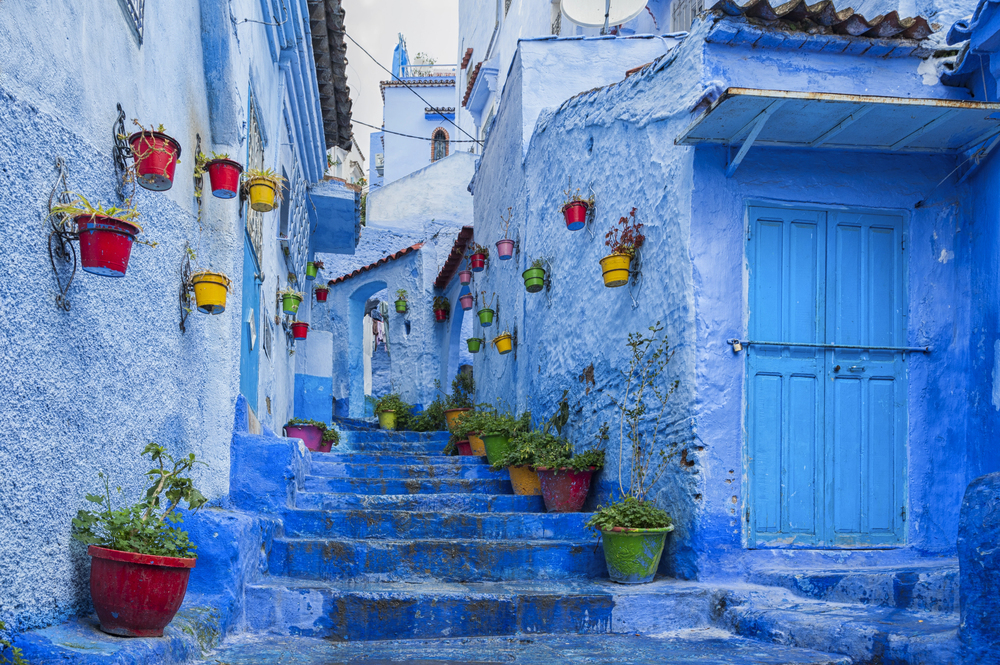
The “Blue Pearl of Morocco” presents an entire town painted in varying shades of blue, from pale sky tones to deep indigo, creating an immersive monochromatic experience as you wander its hillside lanes. Originally painted by Jewish refugees who brought their tradition of blue-painted homes representing divinity and heaven, the color has been maintained and expanded by generations of residents.
Morning light brings out cerulean tones, while evening shadows transform the same streets to midnight blues, creating a living canvas that changes throughout the day.
Like Travel Pug’s content? Follow us on MSN.
Lake Louise, Alberta, Canada
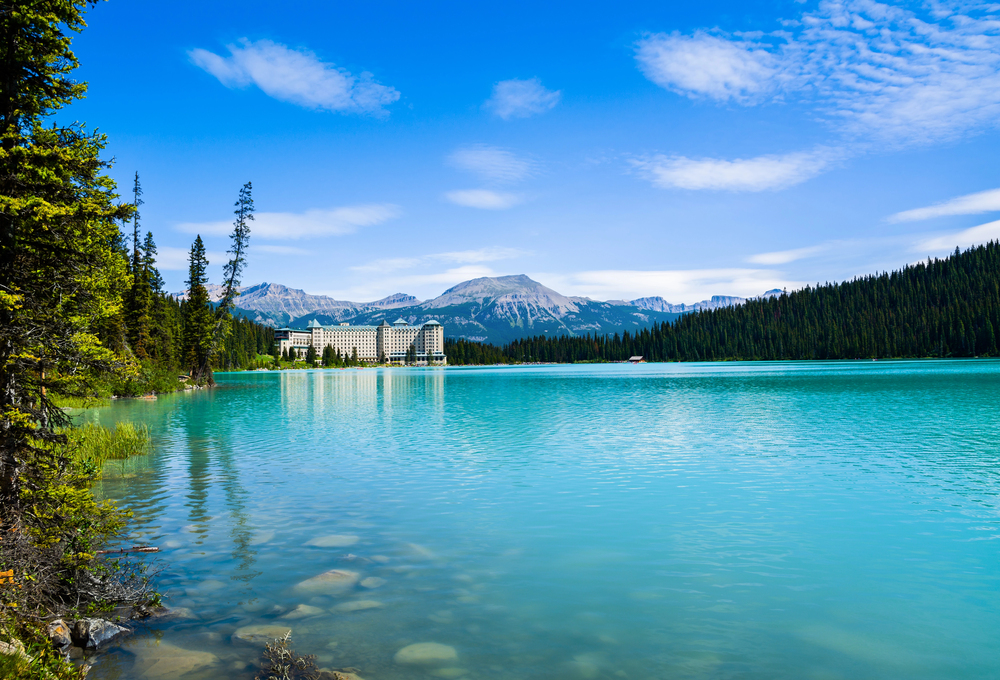
The distinctive turquoise blue of this alpine lake comes from rock flour suspended in the glacial meltwater, creating a color so vivid it appears almost artificial despite being entirely natural. The lake’s surface changes from milky blue in midday to deep sapphire at dusk, with surrounding mountains reflecting in the water to create mirror images of the landscape.
Winter transforms the experience entirely as the frozen surface creates a different kind of blue—the deep, almost translucent cyan of compressed ice that absorbs every color except blue wavelengths.
The Blue Lagoon, Iceland

Iceland’s famous geothermal spa offers immersion in milky blue waters, the color of which comes from unique minerals and silica suspended in the heated seawater. The specific light-scattering properties of these microscopic particles create a blue that seems to glow from within, especially visible when white silica mud is rubbed on the skin, creating a stark contrast against the azure water.
Steam rising from the surface creates an ethereal boundary between water and air, diffusing light to soften the visual experience into dreamlike blue tones.
Jökulsárlón Glacier Lagoon, Iceland
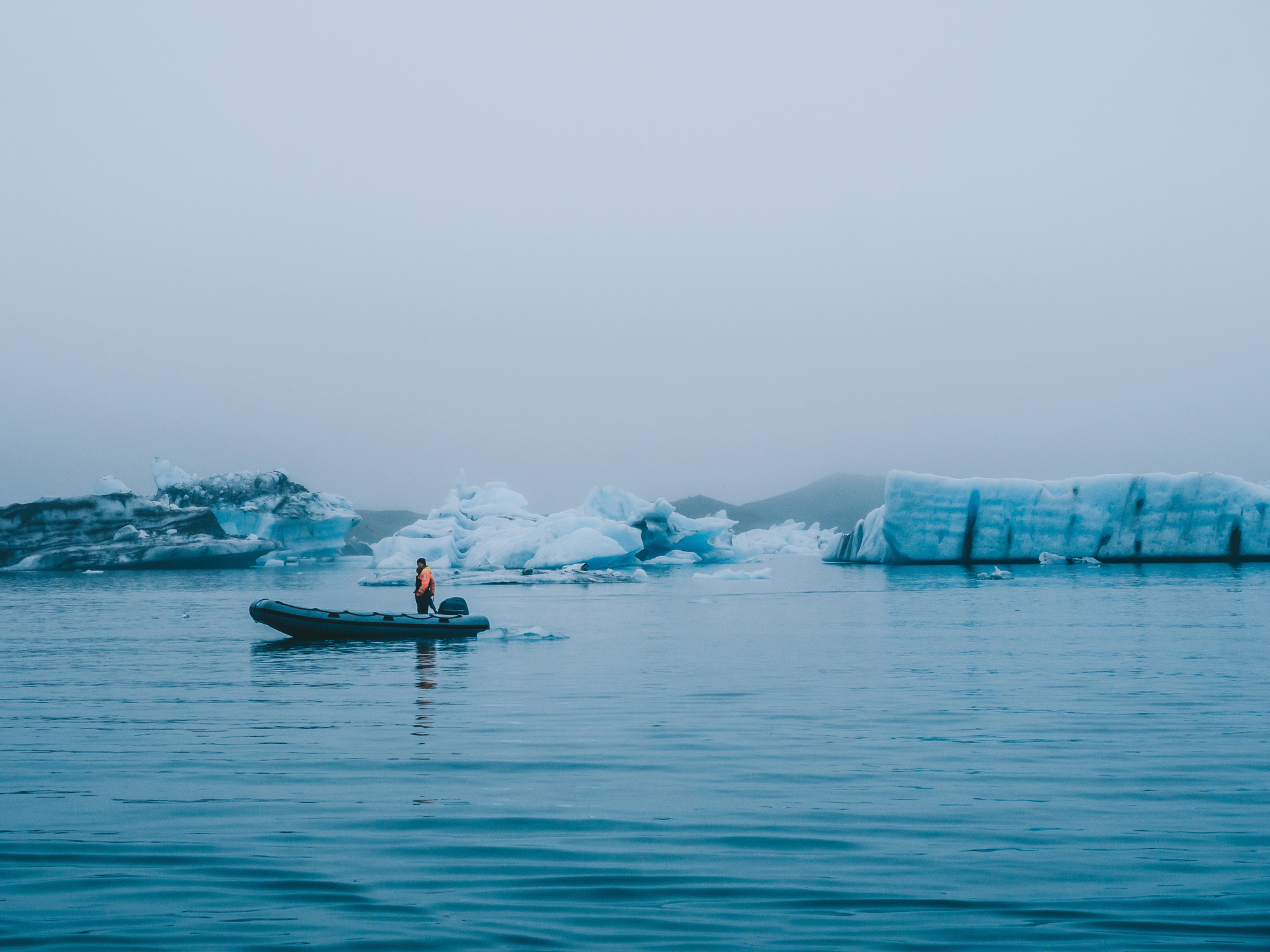
The floating icebergs in this glacial lagoon display the most intense natural blues on earth, created by ice so dense that it absorbs all red light wavelengths, leaving only blue to reflect to the viewer’s eye. Each iceberg presents a different shade depending on its age and density, from pale aquamarine to the deep indigo of ice compressed over thousands of years.
The surrounding air often takes on a blue cast as light reflects between ice surfaces, creating an environment where you feel surrounded by blue both visually and atmospherically.
Like Travel Pug’s content? Follow us on MSN.
The Maldives Bioluminescent Beaches

Certain beaches in the Maldives host bioluminescent plankton that transform nighttime shores into fields of glowing blue stars beneath your feet, disturbing the sand with each step. The specific blue wavelength emitted by these marine organisms creates a color impossible to reproduce artificially, appearing simultaneously electric and liquid.
Swimming in these waters envelops your entire body in swirling blue light that follows each movement, creating perhaps the closest experience to becoming the color blue rather than merely seeing it.
The Blue City of Jodhpur, India
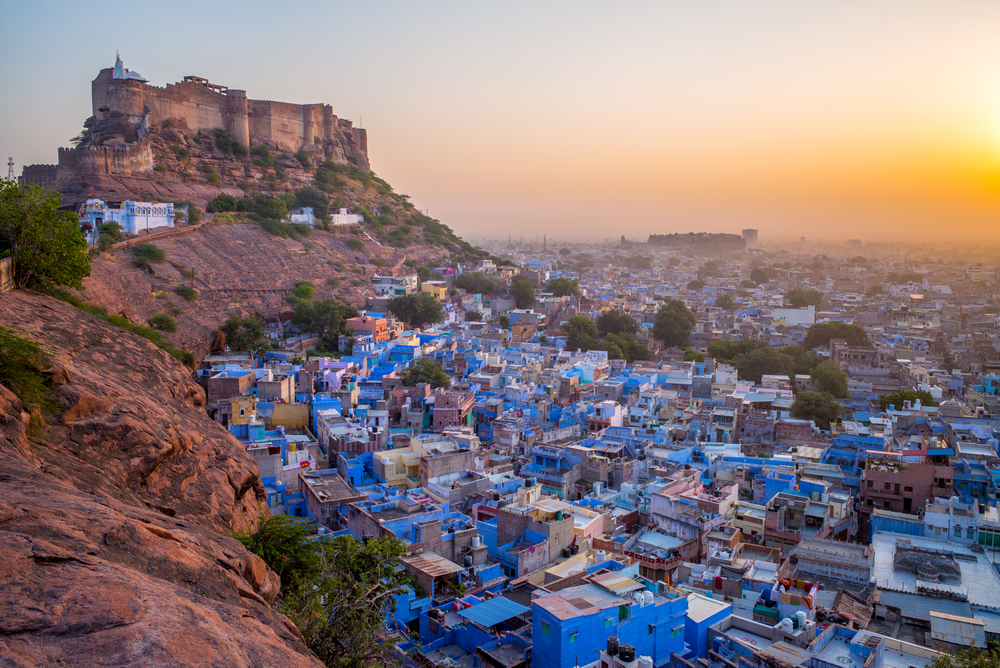
Rising from the edge of the Thar Desert, Jodhpur’s indigo-washed buildings create a striking monochrome landscape beneath Rajasthan’s characteristically clear skies. Originally painted blue as a cooling technique and caste designation, the tradition has expanded throughout the old city, creating an ocean of blue buildings best viewed from the Mehrangarh Fort above.
The intensity of the color varies dramatically with the light, appearing almost gray-blue at dawn before transforming to vibrant cobalt under direct sunlight and softening to periwinkle in the evening light.
Lake Pukaki, New Zealand

This glacial lake on New Zealand’s South Island offers an almost surreal experience of blue, with waters so vividly turquoise they seem digitally enhanced. The coloration comes from extremely fine rock flour suspended in glacial meltwater, scattering sunlight in a way that intensifies blue wavelengths. Framed by the snow-capped Southern Alps and with Aoraki / Mount Cook rising in the distance, the lake creates an immersive visual field of sky and water blending into one continuous, tranquil blue expanse.
On calm days, the reflection creates a perfect symmetry that blurs the boundary between reality and its mirrored image, deepening the emotional impact of the color. The sense of isolation and stillness adds to the profound calm often associated with blue, making the experience as meditative as it is visual.
Like Travel Pug’s content? Follow us on MSN.
Crater Lake, Oregon
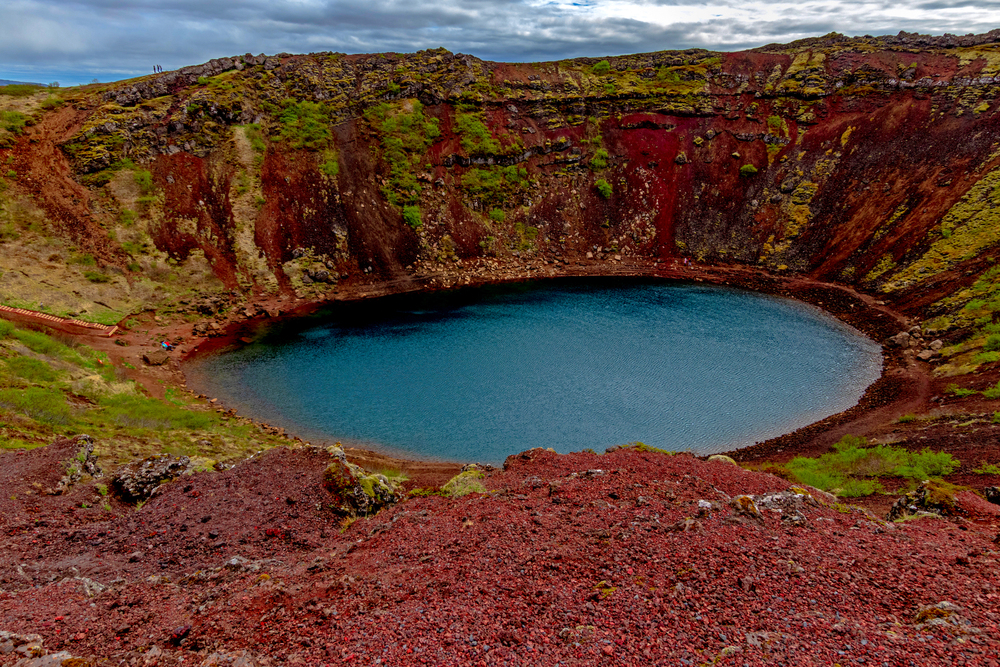
The extraordinary clarity and depth of America’s deepest lake create what scientists measure as some of the purest blue water on earth, with visibility reaching 100 feet. The lack of incoming streams means no sediment clouds the water, allowing sunlight to penetrate deeply and interact with water molecules in ways that maximize blue wavelength reflection.
Winter visits offer a different blue experience as snow surrounds the still-unfrozen lake, creating a stark contrast between the deep, azure water and brilliant white landscape.
The Blue Ridge Mountains, Appalachia

The distinctive blue haze that gives these ancient mountains their name comes from the isoprene released by forest vegetation, creating particles that scatter short-wavelength blue light. The effect intensifies with distance, making farther ridges appear progressively bluer until they seem to dissolve into the sky itself.
Early morning offers the most intense blue experience as overnight cooling concentrates the compounds before the day’s heat disperses them, while the quality of blueness changes seasonally as different plants contribute their emissions.
The Blue Mosque, Istanbul
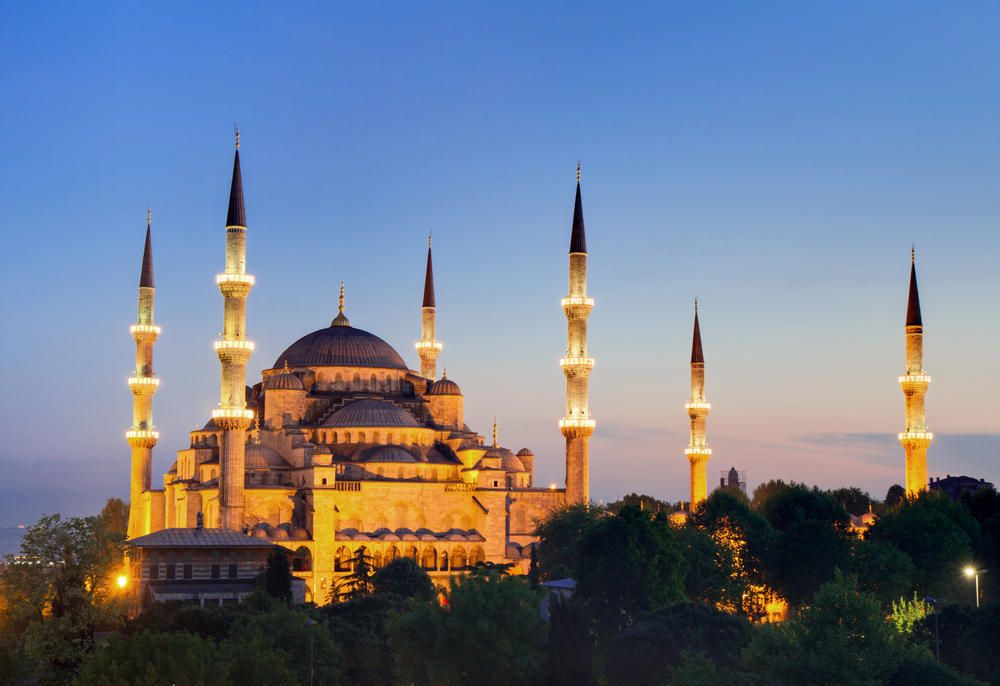
The interior of Sultan Ahmed Mosque creates an immersive blue environment through over 20,000 hand-painted Iznik tiles featuring more than fifty different shades of blue. Sunlight filtering through 260 windows creates constantly changing patterns as the blue reflections shift throughout the day, reaching peak intensity during morning hours.
The acoustic properties of the domed space seem to complement the visual experience, with the resonant quality of prayers and conversations taking on what many visitors describe as a “blue” quality matching the surrounding environment.
Like Travel Pug’s content? Follow us on MSN.
The Caves of Patagonia’s Marble Cathedral

The extraordinary blue reflections in these marble caves come from glacial meltwater containing fine particles that scatter light in ways that emphasize blue wavelengths. Water levels determine the intensity of the experience, with February and March offering the deepest blue as lake levels drop to allow maximum light penetration.
The constantly moving water surface projects rippling blue patterns onto the white marble walls, creating a dynamic environment where blue seems to flow around you rather than remain static.
Essaouira, Morocco

This Atlantic coastal town combines the blue-washed buildings of Moroccan tradition with the deep blues of the ocean and sky, creating layered blue experiences that change with the weather and time of day. Historically known as a haven for artists seeking chromatic inspiration, the quality of light reflecting between whitewashed walls and blue-painted doors and windows creates subtle variations in blue that are impossible to capture in photographs.
The constant sea breeze carries salt particles that scatter light in ways that enhance blue wavelengths, creating a unique atmospheric blueness experienced beyond just vision.
The Blue Zones of the Aegean
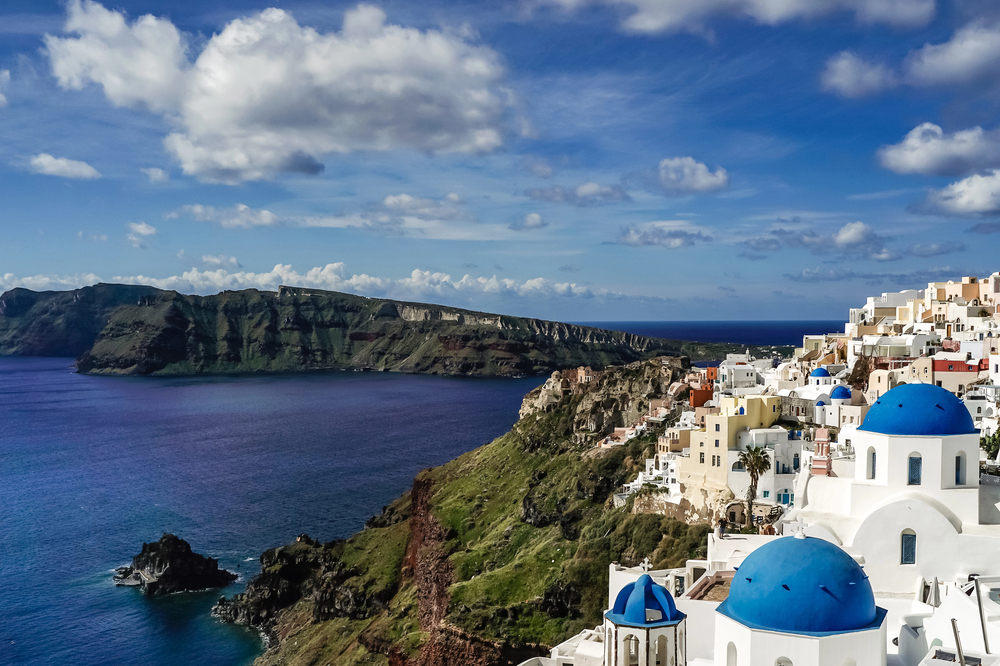
The Greek islands of the Aegean—particularly Ikaria and sections of Crete—feature the famous blue-domed churches and cerulean waters that define Mediterranean blueness. The specific quality of light at this latitude creates what painters have attempted to capture for centuries: a blue that seems to exist between air and water, visible as both color and atmosphere.
Traditional blue eye amulets decorate doorways throughout these regions, adding cultural dimensions to the blue experience through connections to history and belief systems focused on this particular color.
Like Travel Pug’s content? Follow us on MSN.
Pantanal Wetlands, Brazil

During the flooded season, the world’s largest tropical wetland creates vast mirrors reflecting the sky, doubling the blue visible in every direction. Dawn in the Pantanal offers a particularly intense blue period known locally as “the blue hour,” when the landscape briefly appears entirely monochrome before sunrise introduces other colors.
The quietness of these moments, with only occasional bird calls breaking the silence, creates a synesthetic experience where the visual blueness seems to extend to other senses.
The Majorelle Garden, Marrakech
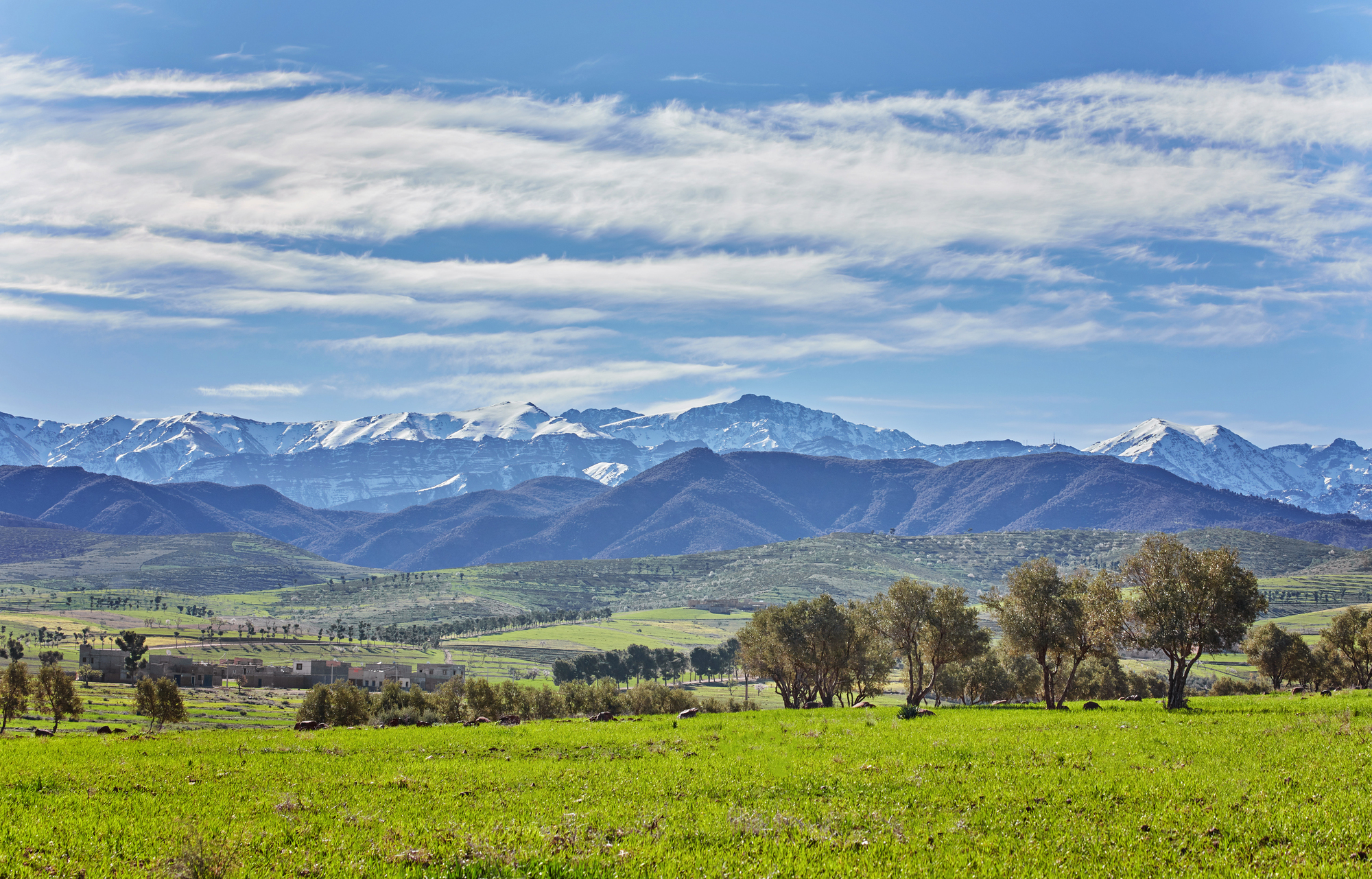
This botanical garden features a specific shade of cobalt blue that is so distinctive it became known as “Majorelle Blue,” and it is used throughout the property on buildings, pots, and garden features. The intense color stands in dramatic contrast to the green vegetation and terracotta surroundings, creating focused blue experiences that change as you move through the space.
The garden’s founder, Jacques Majorelle, described his signature blue as having the quality of “shadows rushing toward light,” capturing the dynamic feeling visitors experience as the blue elements interact with changing daylight.
The Antarctic Ice Shelves
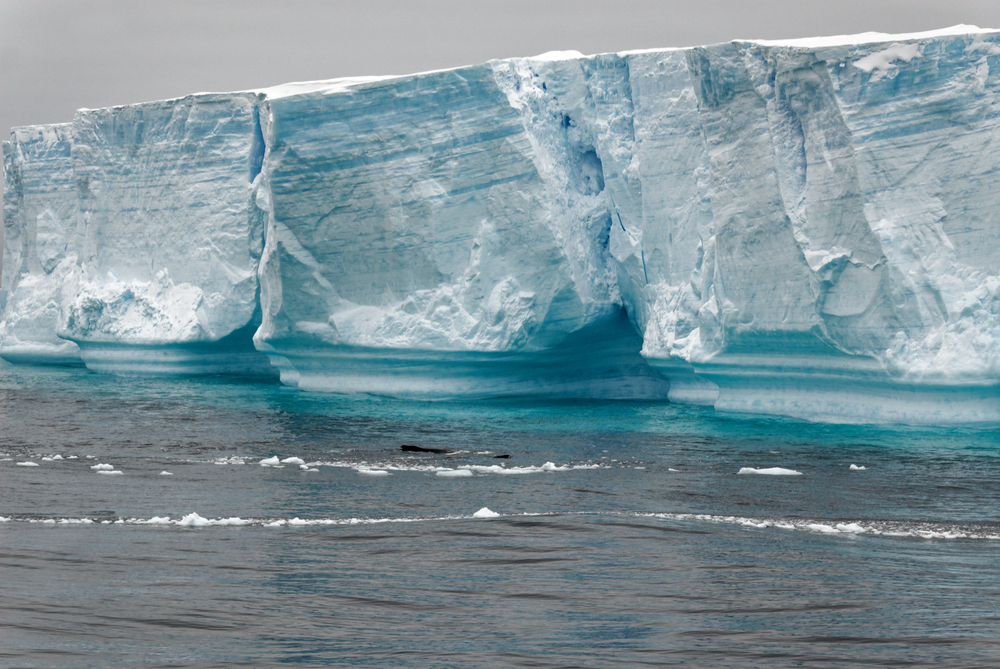
The compressed ice of Antarctica creates the most unearthly blues on the planet as ancient ice absorbs all colors of the spectrum except blue, which refracts through crystalline structures formed over millennia. Ice caves and crevasses reveal blue gradients impossible elsewhere, from pale sky-blue to colors so deep they appear almost ultraviolet.
The quality of light at polar latitudes enhances these blues, particularly during the “blue hour” when the sun sits just below the horizon, casting the entire landscape in ethereal blue illumination.
Like Travel Pug’s content? Follow us on MSN.
The Blue Pools, New Zealand

Located along the Haast Pass, these crystal-clear pools derive their extraordinary azure color from glacial flour suspended in the water, creating hues that shift from turquoise in sunlight to deep sapphire in shadow. The water clarity creates an optical illusion of shallowness despite significant depth, making large boulders visible on the riverbed appear eerily suspended in blue space.
The surrounding beech forest creates natural frames for the blue water, enhancing its intensity through complementary green contrasts.
The Blue Town of Sidi Bou Said, Tunisia
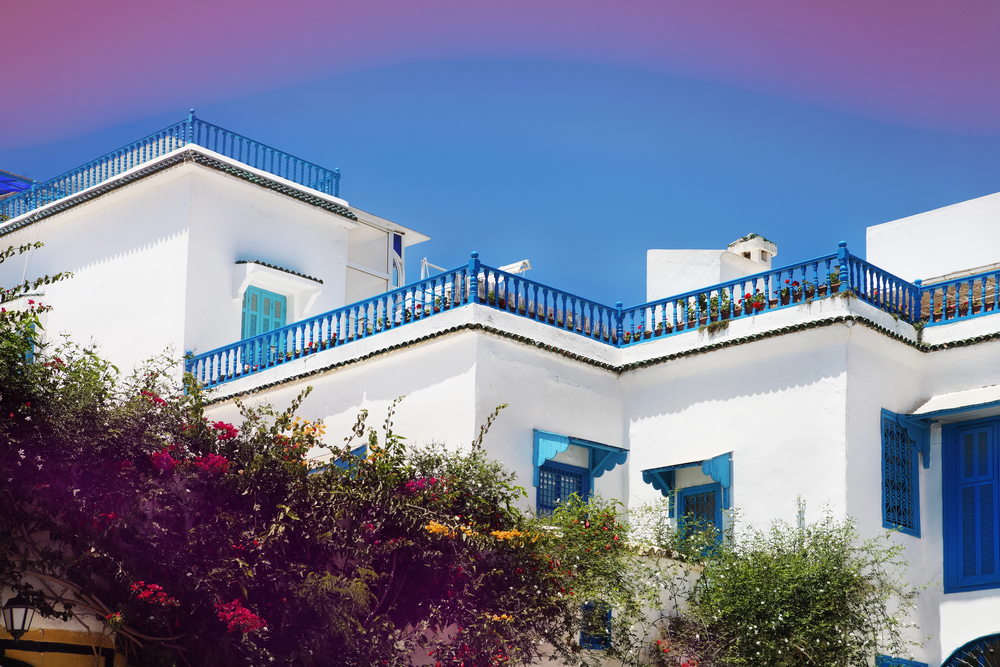
This Mediterranean hillside town combines whitewashed buildings with precise applications of a specific shade of saturated blue on doors, windows, and railings, creating a rhythmic pattern of blue punctuation throughout the environment. The town’s elevated position creates views where the architectural blues visually connect to the sea below, creating continuity between built and natural environments.
The quality of blue shifts dramatically from sharply defined edges in the midday sun to soft, diffused boundaries at dusk when the entire town takes on a blue cast.
The Indigo Shores of Ria Celestún, Mexico

The biosphere reserve along Mexico’s Yucatán coast creates an extraordinary blue spectacle where pink flamingos wade through waters colored a deep indigo by unique combinations of salt concentration and specific algae. The meeting point of freshwater springs and Gulf waters creates bands of blue ranging from pale turquoise near the shore to profound navy in deeper channels.
Sunrise boat tours reveal the most intense blue experience as morning light strikes the water at low angles, creating a reflective surface that multiplies the blue effect between sky and water. In contrast, thousands of flamingos create a perfect pink contrast against the blue backdrop.
The Living Color
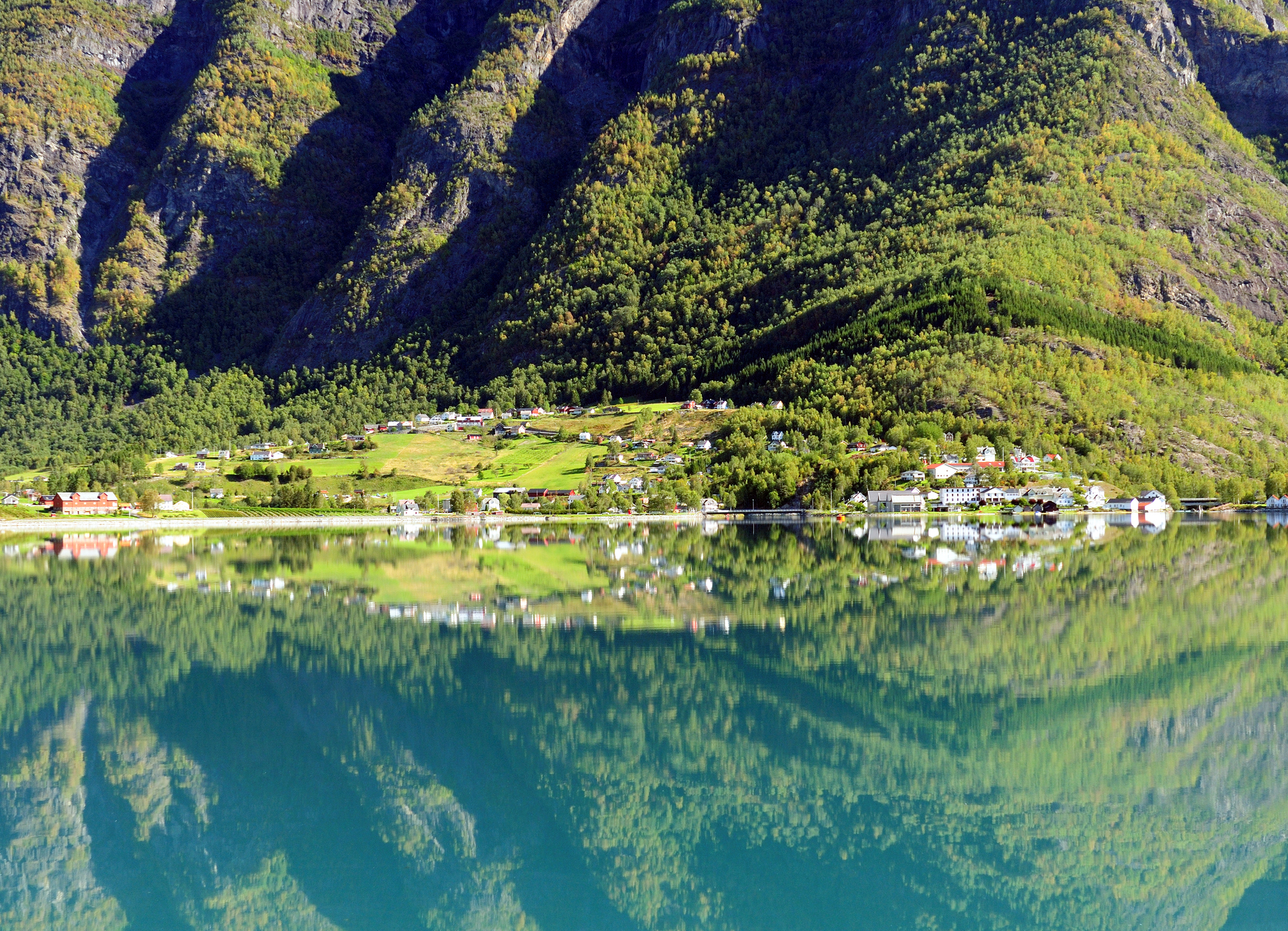
These blue places remind us that colors exist beyond mere visual perception, creating environments that affect our emotional states, cultural associations, and even physiological responses. The experience of blue—whether in the enveloping azure of underwater caverns or the vast cerulean expanses of mountain vistas—connects to something primal in human consciousness.
This explains why languages worldwide developed words for blue only relatively recently in linguistic evolution; the experience seemed too fundamental, too atmospheric, to require naming until humans began creating permanent blue pigments. These destinations offer not just blue sights but blue feelings—immersive experiences of a color that continues to represent both the tangible world around us and the ineffable domains of memory, emotion, and imagination.
More from Travel Pug

- Cities Growing so Fast You Won’t Recognize Them in 10 Years
- 13 Destinations Where Tourists Regularly Regret Their Trip
- 20 Obscure WWII Sites Even History Buffs Don’t Know About
- 10 Under-the-Radar Mountain Towns That Are Both Affordable and Beautiful
- Remote Villages in Europe Where You Can Live for Free in Exchange for Work
Like Travel Pug’s content? Follow us on MSN.
